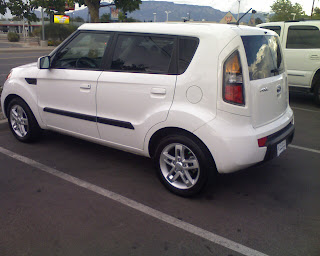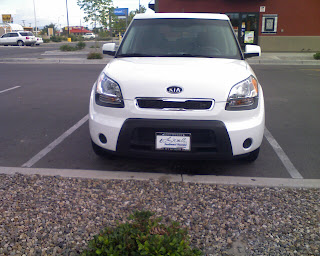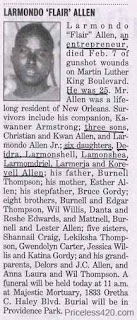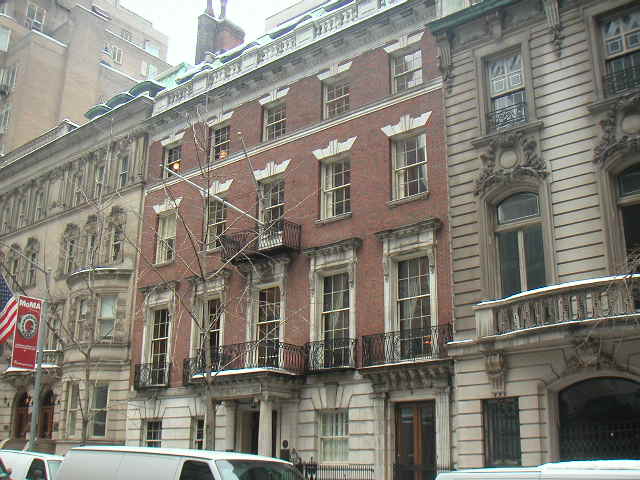It did not call itself the flagship Ray’s Pizza because it never really had a fleet. It was not Original Ray’s or Famous Ray’s or Original Famous Ray’s or Real Ray’s or Ray’s on Ice or any of the other cloned shops sprinkled like shredded mozzarella all over town. It was simply Ray’s Pizza, and in the great pizza wars of New York City, it was respected as having been the first, standing more or less above the fray at 27 Prince Street in Little Italy, with tree limbs holding up the basement ceiling and an owner whose name wasn’t even Ray.
And now, it seems, barring any surprises, Ray’s Pizza — the original that was so original it did not have the word “original” in its name — appears doomed to close at the end of the month.
This is not a popular topic at Ray’s right now.
“I don’t want you to put that this is the end,” said Helen Mistretta, the manager who, seven months before her 80th birthday, is in no mood for weepy nostalgia. “It’s the end of 27 Prince, not the end of Ray’s of Prince Street.”
http://www.nytimes.com/2011/09/18/nyregion/rays-pizza-the-first-of-many-counts-down-to-last-slice.html?_r=1&emc=eta1
My first pizza experience was a hole-in-the-wall pizza joint in my old neighborhood of Jackson Heights, Queens in NYC. It was on 77th Street, just up from 37th Avenue, on the east side of the street. I don't know if it had an official name, but we all called it "Ritchie's Place" because the owner and pizza maker was named Ritchie. He was a Jewish guy from the Bronx, in his mid twenties or early thirties. He wanted a small business and this one was available. Ritchie was open from lunch time until early evening and later in the summer. In his white t-shirt and baker's pants, with a dusting of flour he certainly looked the part.
For a quarter, you could have a slice of cheese pizza and a small Coke, a good deal for the kids at P.S. 69, half a block away on the south side of 37th Avenue. I worked with Ritchie for a bit, learning how to make pizza. I was just entering junior high, so I couldn't have been more than 13. The pizza dough was made in a bakery in Brooklyn, as I recall and was delivered daily as rounds wrapped in plastic film. Ritchie used a big grinder -- what's called a "Buffalo Chopper" I came to learn -- to make the shredded mozzarella and the sauce came out of a large #10 can from Italy. To my taste, with no frame of reference, it tasted perfectly fine. On a whole pie, Ritchie could add ingredients, like pepperoni or sausage. At some point, he added heroes to the menu, with the meatballs and sausage sourced from a supplier in Little Italy. I developed a taste for sausage heroes there that remains to this day.
When I started hanging out in the Village a few years later -- call it '62 or '63 until I got drafted in -65 -- I tried a number of places, but my favorite -- and I liked their Sicilian slices the best -- was on the NE corner of Bleecker Street at Thompson. It was pretty large and had tables, but I can't remember ever eating at one. We usually got a slice and a Coke and either ate at the counter, standing, or took the slice and soda and walked. (Checking Google Earth, it is now a place called "The Red Lion" which offers live music and such. Times change.)
We walked a lot, back then. When Cathy and I -- she was the love of my life at that time, winter of '63 through the following summer -- lived on E6th and Ave. D, we would walk to the Village Where we lived was still considered the Lower East Side; the real estate people hadn't gotten around to renamed it the "East Village" yet. (It wasn't far, in fact, from the infamous "Alphabet City" which had, especially in the crack era of the mid-'80s, a truly horrific reputation. Even when I lived there, my aunt, who edited The Villager, the neighborhood alternative to The Village Voice and far more of a typical small town paper, was appalled that I was living, with my girlfriend, in such a dangerous neighborhood. We never saw it that way. It was, for a time, home.)
We called our journey "Westering" since that is generally the direction we were going. We'd usually cut over to 3rd or 4th Street to make the journey, since 6th didn't go through, ending at the Bowery or 3rd Ave. whichever you called it. I think on maps it was 3rd Ave. at that point, but we tended to think of it as the Bowery until the Astor Place/St. Mark's Place junction.
Our destination was one or another of the coffeehouses we frequented or where we knew a friend was playing a gig. Our "official" gathering place was the back room of what was then Café Rienzi. At other times it had been The Commons and The Fat Black Pussycat and it would become Café Feenjon in the early '70s. (I was night manager, working from 7 until sun-up. At the time, I lived across the street at 107 MacDougal, above the Gaslight and the Kettle of Fish. No long walks, then.)
At Rienzi's, we often had the large round table and the entire back room to ourselves, as long as we kept it clean and didn't pull the waitress back there when it was busy. We were regulars and comfortable enough there to get our own drinks and food from the counter and bus our own mess. If we wandered over on weekend afternoons, we often sat in the front room, often at window-seat tables as a draw for the tourist trade. One of our number came up with the idea, based on that, of renting us out to would-be hipsters for their parties, often at addresses well out of the Village. It as said of some of us that we would get nosebleeds above 14th Street, but we got over them. We were getting about 20 bucks for an evening as local color at a party. We pretty much considered ourselves Bohemians or, as some of us said, "Baby Beatniks" since were a decade or two younger than the real beats like Kerouac, Ginsberg and that crew. Back then, "Hippie" was an insult. Some of us still think it is, but that's a topic for a whole other posting.
Now, after that meander down memory lane, or as Dylan called it, "my back pages," let us return to pizza. I contend that there is no decent "New York-style" pizza outside NYC, and that is because pizza is just flour -- which is pretty much the same anywhere, made from heartland wheat -- water, olive oil, salt, packaged yeast and whatever airborne yeast (what the French call le sauvage, wild yeast) gets into it. The only stuff that is specific to a place is the water and the wild yeast. At one time, a pizza maker in Berkeley actually trucked in NYC tap water to make a "true" New York pizza, but the cost versus price was just too lopsided and they stopped. I like pizza from elsewhere -- the California Pizza Kitchen pizzas are good, and I've had other pizza that was fine -- but it ain't real NY pizza if is isn't made in NYC!
I mourn the passing of Ray's of Prince Street, even if I can't remember ever eating there. It is part of the history of Little Italy, a place that is being subsumed by Chinatown and the real estate market below Houston Street. The same thing is happening in San Francisco. Only a few of the old places still exist in what was once a thriving and vital Italian neighborhood. You hardly ever see an old noni with a basket for her marketing and the accents on the air are not Italian.
One of the last of the old places, DiMaggio's Steak House has closed. It used to be Fior d'Italia and re-opened under the new name after a kitchen fire in 2005. Fior d'Itlaia is the oldest Italian restaurant in SF -- they say in the country, but I have my doubts -- and has been in six locations since opening in 1886. It is still open on Mason Street, in the historic San Remo hotel in North Beach, not far from Bay Street. (As DiMaggio's, it was owned by a Lebanese businessman with a fairly fat wallet. So at the end, it wasn't really part of the old Italian tradition except in name and menu.)






